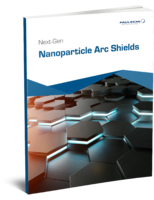Proposed Tetrad Testing Standard addresses sensory analysis.
Press Release Summary:
ASTM International Committee E18 on Sensory Evaluation is developing ASTM WK32980, Test Methods for Sensory Analysis - Tetrad Test, which would allow companies to make more informed decisions about potential product changes. This proposed standard specifically addresses problems that occur when resources are not available for proper size test needed to reliably detect differences. Currently, ASTM WK32980 is under jurisdiction of Subcommittee E18.04 on Fundamentals of Sensory.
Original Press Release:
Proposed Standard on Tetrad Testing Method in Sensory Analysis Underway in ASTM
W. CONSHOHOCKEN, Pa.-Discovering how differences between two versions of a product will affect that product's performance continues to be a challenge for sensory professionals. However, in the past 30 years, the testing method known as the Tetrad test has begun to emerge as a means of saving companies money by enabling more information to be extracted from smaller product tests.
ASTM International Committee E18 on Sensory Evaluation is currently developing a proposed new standard on the Tetrad test, ASTM WK32980, Test Methods for Sensory Analysis - Tetrad Test. ASTM WK32980 is under the jurisdiction of Subcommittee E18.04 on Fundamentals of Sensory.
According to Dr. John Ennis, vice president of Research Operations at The Institute for Perception, and E18.04 chairman, when a company wishes to know whether two products perform differently, as occurs in advertising claims or when an ingredient change is being considered, difference testing is typically conducted internally. In a Tetrad test, four samples, two from one version of the product and two from the other, are presented to a subject who is then asked to group the samples into two groups of two, based on similarity.
"The Tetrad test has the remarkable property that the experiments needed to reliably detect differences using this method are potentially only one third to one half the size of the experiments needed to reliably detect differences using other existing methods," says Dr. Ennis. "This fact is extremely important to companies that stand to gain millions of dollars through an effective ingredient substitution or to save millions of dollars by forgoing a change that would have resulted in a noticeably different product."
Dr. Ennis notes that a common problem currently occurring in product testing is that, when attempting to use current methods, resources are often not available for the proper size test that would be needed to reliably detect differences. The proposed new standard would give companies an affordable test method that would allow them to make more informed decisions about potential product changes.
Interested parties are invited to participate in the standards developing activities of E18.
ASTM International welcomes and encourages participation in the development of its standards. For more information on becoming an ASTM member, visit http://www.astm.org/JOIN.
ASTM International is one of the largest international standards development and delivery systems in the world. ASTM International meets the World Trade Organization (WTO) principles for the development of international standards: coherence, consensus, development dimension, effectiveness, impartiality, openness, relevance and transparency. ASTM standards are accepted and used in research and development, product testing, quality systems and commercial transactions.
View this release on the ASTM Web site at www.astmnewsroom.org.
ASTM Committee E18 Next Meeting: Nov. 1-4, 2011, October Committee Week, Tampa, Fla.
Technical Contact: John M. Ennis, The Institute for Perception, Richmond, Va., Phone: 804-675-2980; john.m.ennis@ifpress.com




